SCHRACK Conventional Lamps


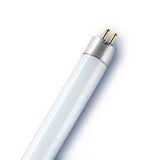

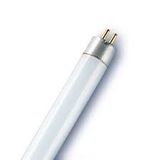

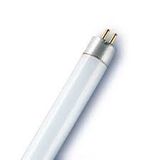
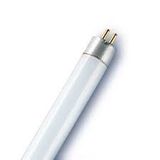
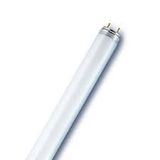
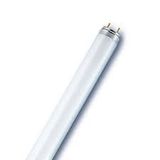




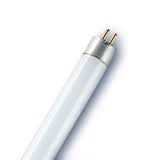
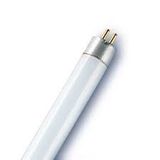



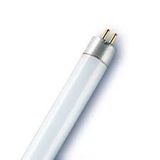

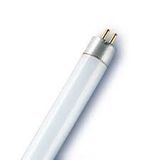


schrack lamps for professional retrofit and new builds
Project teams use this portfolio when they need predictable lumen packs, stable colour, and compatible caps without reworking holders. Mains variants run 220–240 V AC in A60/A67, PAR, and GU10 formats; low-voltage types cover 12 V MR16/G4 for showcases and task heads. Typical outputs span 300–1 500 lm per lamp with efficacy 100–140 lm/W. Colour options 2700–6500 K with SDCM ≤ 3; CRI ≥ 80 standard and CRI 90 on selected SKUs for retail/healthcare. Dimmable items support trailing/leading-edge (model-dependent) and, on pro lines, 1–10 V or DALI-ready driver capsules in kit luminaires. Surge immunity is commonly 1–2 kV L–N; PF ≥ 0.90 and THD ≤ 15 % are typical on professional ranges.
Product families and bases installers actually specify
- General service (A-lamps, E27/E14): opal diffusers for corridors and utility rooms; enclosed-fixture-rated versions for bulkheads.
- Directional (GU10/MR16): 24°/36° beams with CBCP tables for aiming; aluminum heat sinks keep Tc inside spec in small cans.
- Capsules (G9/G4): compact task lighting and furniture heads; verify minimum clearances and thermal path.
- Special formats (R7s/GX53): shallow luminaires and linear wall-washers.
Caps follow IEC 60061 geometry, so swaps don’t force new lampholders or trims.
Technical specifications and standards
Electrical: 220–240 V AC (GU10/E27/E14) and 12 V AC/DC (MR16/G4). Power quality on pro SKUs: PF ≥ 0.90, THD ≤ 15 %. Safety/EMC: IEC 62560, IEC/EN 61347-1/-2-13, EN 55015/EN 61547. Photobiological evaluation to EN 62471 (RG0/RG1 families). Lifetime claims reference LM-80 tested LEDs with TM-21 projections; typical L70/L80 at 25–40 °C ambient is 25 000–50 000 h. Operating window −20…+40 °C; storage −20…+60 °C. Always check “enclosed-fixture rated” when lamps go into sealed cans or globes.
schrack led lamp series selection and optical control
Choose lumen pack and beam from the room calc, then lock optics and colour policy:
- Beam control: narrow/spot/medium/wide GU10/MR16 optics; honeycomb and black baffles minimize glare in low ceilings.
- Colour & fidelity: CRI 80 for back-of-house; CRI 90 with strong R9 for retail/clinics; keep SDCM ≤ 3 across adjacent spaces to avoid patchwork ceilings.
- Flicker & imaging: low-ripple drivers for camera zones; verify Pst LM and SVM where applicable.
- Thermal: check Tc marks; recessed cans and tiny spot heads run hotter—derate or pick high-Ta variants.
For point replacements in mixed fleets, label each circuit with maximum lamps per dimmer; phase-cut channels can hit inrush limits long before current ratings.
schrack decorative lighting options for front-of-house
Filament-style E27/E14 lamps with warm CCT (2200–2700 K) keep hospitality and retail comfortable without abandoning efficiency targets. Frosted domes tame hotspotting in clear glass shades; amber variants maintain ambience at low dim levels. Where luminance control matters, pair decorative optics with matte trims and dimmers with smooth low-level curves to avoid step-changes around 5–10 %.
Applications and compatibility across panels and rooms
Open offices: low-UGR GU10 for meeting spaces; opal A-lamps for utility areas. Retail: narrow-beam GU10/MR16 CRI 90 on feature bays; medium beam on gondolas. Hospitality: filament E27 in public zones, compact capsules in joinery. All variants work cleanly with brand dimmers/contactors and fit the same ceiling accessories and frames used across Schrack luminaires, keeping install minutes and spares predictable. Use the term schrack lighting bulbs in schedules when generic caps are acceptable and driver control isn’t required.
Wiring, dimming, and protection practices that prevent callbacks
- Use dedicated neutrals on dimmed groups; shared neutrals cause ghosting.
- Respect minimum/maximum lamps per dimmer and the dimmer’s inrush limit.
- Coordinate lamp surge rating with board-level SPDs to protect electronics during switching and lightning events.
- On MR16 retrofits, drive from LED drivers (clean DC) rather than legacy magnetic transformers to avoid flicker.
Integration with other brand systems
Lamps drop into Schrack boards and control tiers without novel wiring: RCBO-protected finals, contactor packs for large banks, and the same labeling conventions used in distribution boards. For rooms needing groups/scenes or analytics, move control to driver-based luminaires; for simple rooms and replacements, lamps keep BOMs lean and service fast. If a project later migrates to controls, the same trims and frames carry across.
Selection criteria for B2B engineers
- Target lux & beam: verify CBCP vs mounting height; keep UGR within EN 12464-1 where screens are present.
- Colour policy: lock CCT/CRI per zone; maintain SDCM ≤ 3 across floors.
- Control path: phase-cut for simple zones; specify driver-controlled luminaires for DALI/1–10 V areas.
- Thermal & ingress: confirm enclosed-fixture suitability; lens chemistry vs cleaners; IP requirement by room.
- Power quality: PF ≥ 0.9 and THD within your board budget—important in dense risers.
Document point-for-point replacements as schrack retrofit lighting to keep purchasing aligned with cap types and lumen classes.
Procurement and documentation
Standardize by cap and lumen pack (e.g., E27 800/1 060 lm; GU10 350/500 lm; MR16 400/600 lm). Fix CCT per area (3000 K front-of-house, 4000 K task). Add a compatibility line for approved dimmers and any enclosed-fixture restrictions. Stock 5–10 % spares of the fastest movers; record article codes in the lighting schedule so maintenance can swap like-for-like without recalculating photometry.
Advantages of working with Bankoflamps
Bankoflamps ties pricing to your room schedules and shows live EU stock before you block installers. Quotes typically return in about an hour. Ordering by EAN/MPN prevents variant drift; your portal shows lead times, shipment status, and downloadable price lists. Approved partners can use post-payment up to 30 days. We consolidate partials to cut freight and maintain price-validity windows so phased fit-outs stay predictable. Your account manager cross-checks caps, optics, dimmer compatibility, surge levels, and any trim/adapter kits against your drawings—so cartons arrive complete and ready to fit.